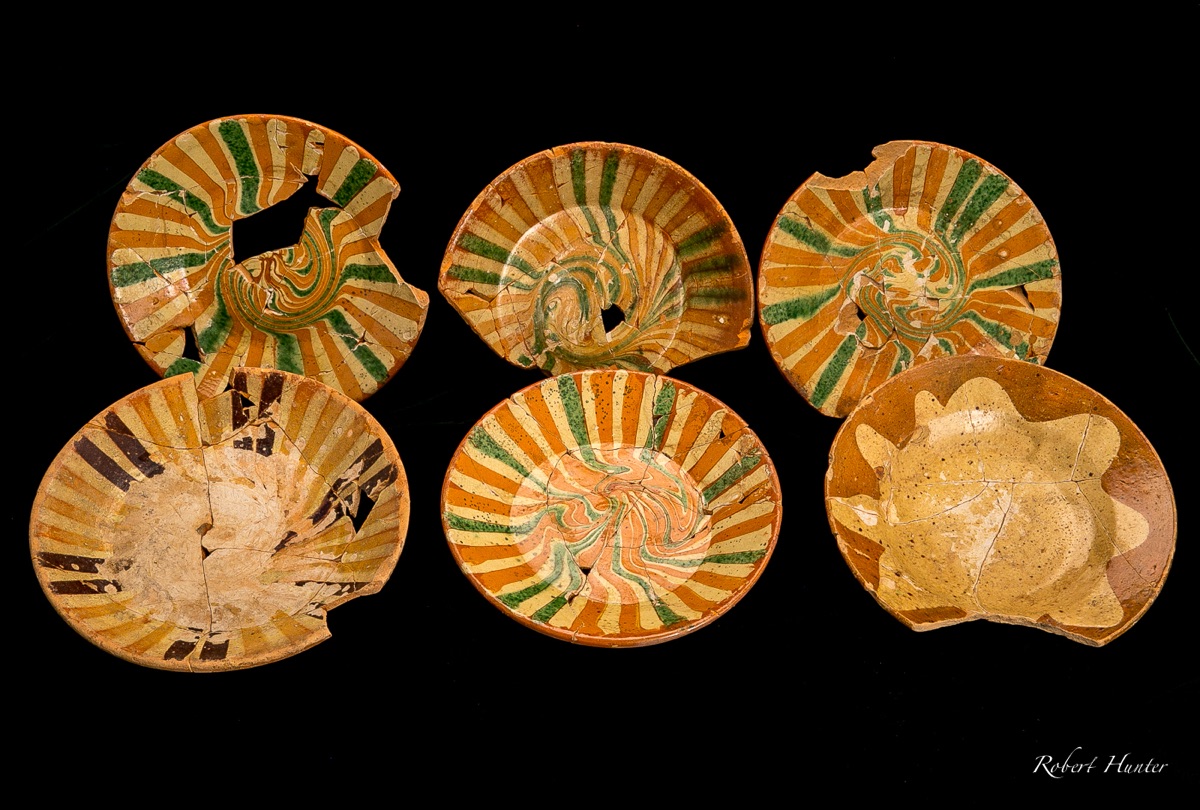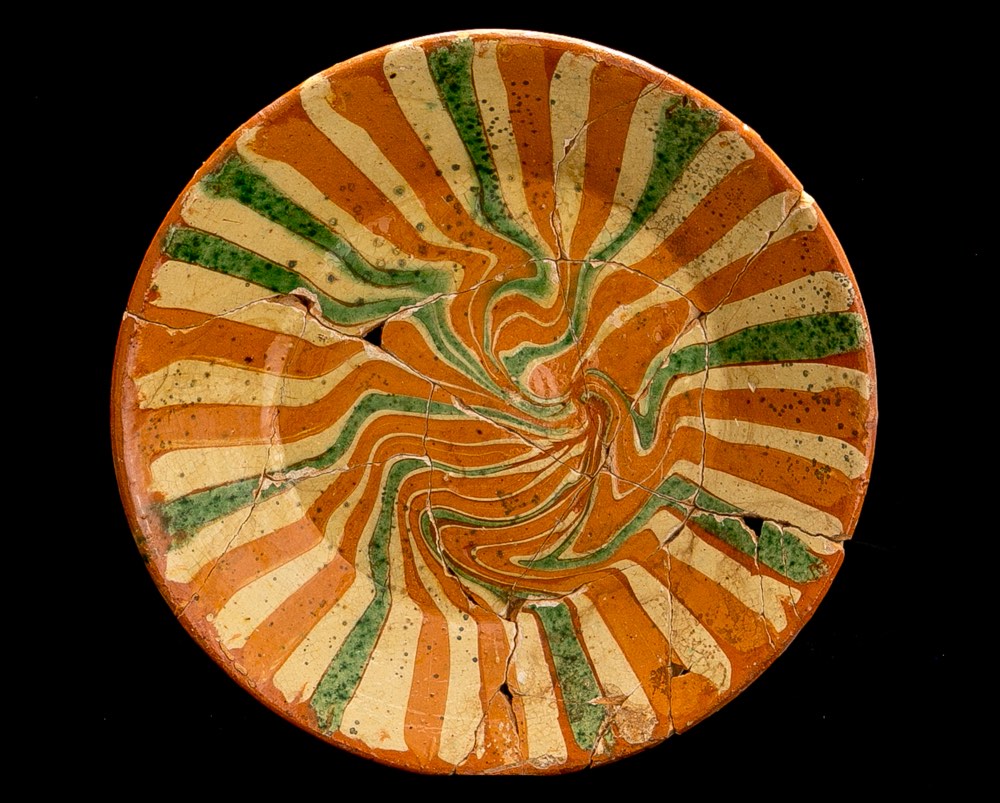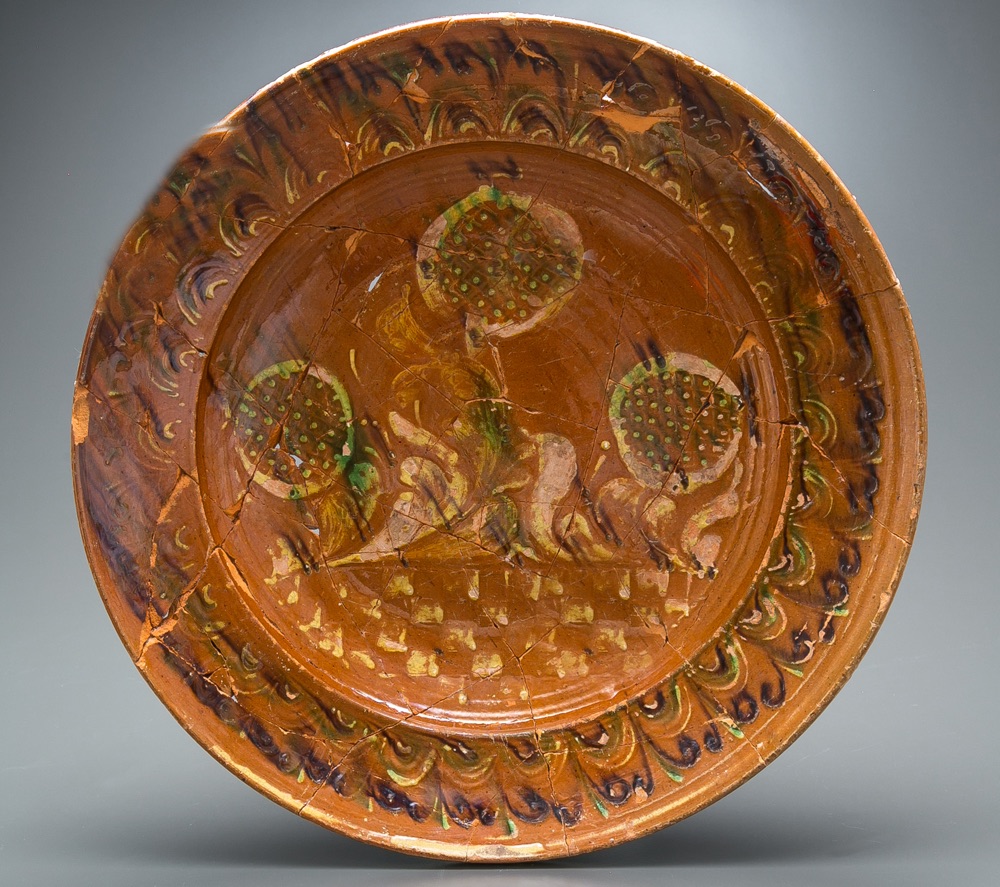Tableware from the Toilet: Colonial Pottery from Philly Privy on Display

Archaeologists may be among the few people who would be happy to find themselves at the bottom of an old toilet.
So imagine the excitement of the researchers who got to dig at the site of the Museum of the American Revolution in Philadelphia before the museum's construction got underway: Those archaeologists found the brick-lined pits of 12 privies, essentially outhouses where people also threw their trash before the era of municipal garbage collection began.
Rare pieces of pottery from the 18th century that were recovered in one of those toilets went on public display for the first time this week (Jan. 18) at the New York Ceramics and Glass Fair. [Toilet Treasures: See Amazing Artifacts Preserved in Philadelphia Privies]
The dishes are decorated with striking abstract patterns made using a technique known as "slip trailing," in which liquid clay is poured onto the surface of a pot.

"We've seen hints of this type of slipware before but nothing that has this degree of intactness and comprehensiveness as far as the patterns exhibited here," Robert Hunter, an archaeologist and editor of the journal Ceramics in America, said in a statement. "Nothing else has been this complete. By virtue of that intactness, we have been able to make great bounds in what we can learn from them, about who made them and how they were used."
Hunter and the researchers who organized the display — called "Buried Treasure: New Discoveries in Philadelphia Slipware from the Collection of the Museum of the American Revolution" — said these dishes were likely made by one of the French or German potters operating in Philadelphia. The pottery was primarily used for decoration, though it may have occasionally been used for serving, the archaeologists said.
The privy shaft where these pots were found had been used by at least one of the old taverns that was located on the site at the corner of South Third and Chestnut Streets, just down the block from Independence Hall, where the Declaration of Independence and Constitution were written and adopted.
Sign up for the Live Science daily newsletter now
Get the world’s most fascinating discoveries delivered straight to your inbox.

Human excrement was apparently a good preservative for artifacts. The dishes were among nearly 85,000 artifacts that archaeologists from Commonwealth Heritage Group dug up at the site of the museum, from 2014 to 2016.
"The materials recovered on these sites require years of research to fully appreciate, and so these treasures from the museum site will continue to provide new insight into Revolutionary America," R. Scott Stephenson, the museum's vice president of collections, exhibitions and programming, said in the statement.
The exhibit runs through Sunday, Jan. 21. After its display in New York, the pottery will return to the collection of the Museum of the American Revolution.
Original article on Live Science.










